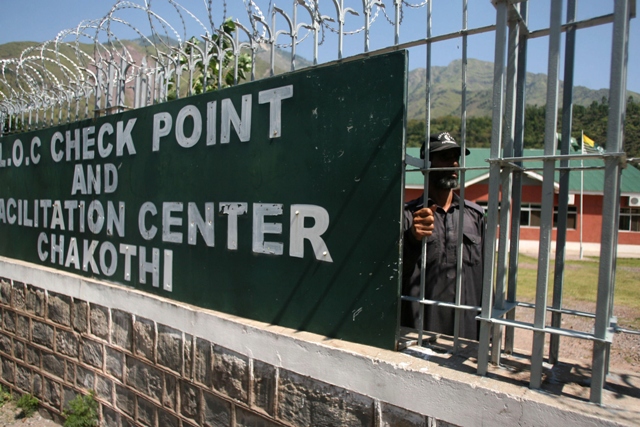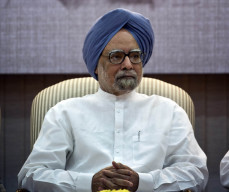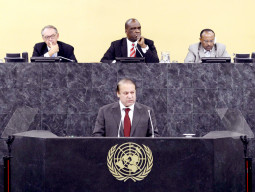
CHAKOTHI: Traders in Kashmir are hoping this weekend's meeting between the Pakistani and Indian prime ministers will ease rising tensions that have seen trade across the territory's de facto border grind to a halt.
Barter trade across the Line of Control (LoC), which divides the disputed Himalayan region between the nuclear-armed rivals, began in 2008 as part of peace efforts.
Mounting tensions and deadly skirmishes along the heavily militarised LoC in recent months have seen the trade come to a standstill for more than three weeks.
Violence flared on August 6 when five Indian soldiers were killed in an ambush Delhi blamed on Pakistan, and on Thursday militants stormed an army base on the Indian side, killing 10.
Pakistan's Prime Minister Nawaz Sharif and his Indian counterpart Manmohan Singh are due to meet on the sidelines of the UN General Assembly in New York this weekend - the first top-level dialogue in three years.
Mohammad Ismail, the chief of the Trade and Travel Authority in Pakistani Kashmir, urged the two leaders to try to cool tensions to end the trade impasse, which he said was costing traders millions of rupees.
"We're not expecting any major breakthroughs in the talks, but we want them to move the peace process forward," he told AFP.
"People-to-people contacts between the two countries should be held so trade may resume."
Kashmir, divided between India and Pakistan at their independence from Britain in 1947, has been a continual thorn in relations and the countries have fought two wars over the territory.
Singh condemned Thursday's "heinous" attack but said it would not deter him as he seeks to resolve problems with Pakistan through dialogue.
On Friday however, he toned down expectations for the meeting, saying Pakistan remained an "epicentre of terrorism".
Ejaz Ahmad Mir, vice president of the LoC trade union told AFP, "we appeal to the international community and also the two premiers to ensure that the peace process does not derail."
"If it is move forward then the trade can be resumed, but we don't have much hope."
The barter arrangement sees goods including rice, jewels, sandals and fruit leaving Pakistani Kashmir and carpets, shawls, dried fruits, and spices amongst others coming from the Indian side.
At Chakothi border crossing, Mohammad Sadiq Shaikh, one of 800 Pakistani traders, spoke of his anxiety at the halt in business.
He has sent potatoes and apples worth up to Rs4.2 million ($42,000 dollars) to Srinagar, but was worried if he would get the goods in exchange from Indian side.
"I am very worried and tense over this hiatus and all my money is at stake," Shaikh told AFP.
Traders from Indian Kashmir say the problem began when the Indian government stopped allowing goods originating from outside the Pakistan-administered Kashmir to enter the Indian side.
Mubeen Shah, president of the Jammu and Kashmir Joint Chamber of Commerce and Industry, told AFP the row also involved a disagreement about which goods could be exchanged.
Shah said the number of traders who cross the LoC from the Indian side has shrunk from 300 to just 30 since it started in 2008.
Attacks in Indian Kashmir are at their lowest in 20 years, but the region remains tense with many Kashmiris chafing under tight security.
Tens of thousands of people have died in the fighting according to an official count while local rights groups estimate up to 70,000 have lost their lives.



































































COMMENTS (1)
Comments are moderated and generally will be posted if they are on-topic and not abusive.
For more information, please see our Comments FAQ